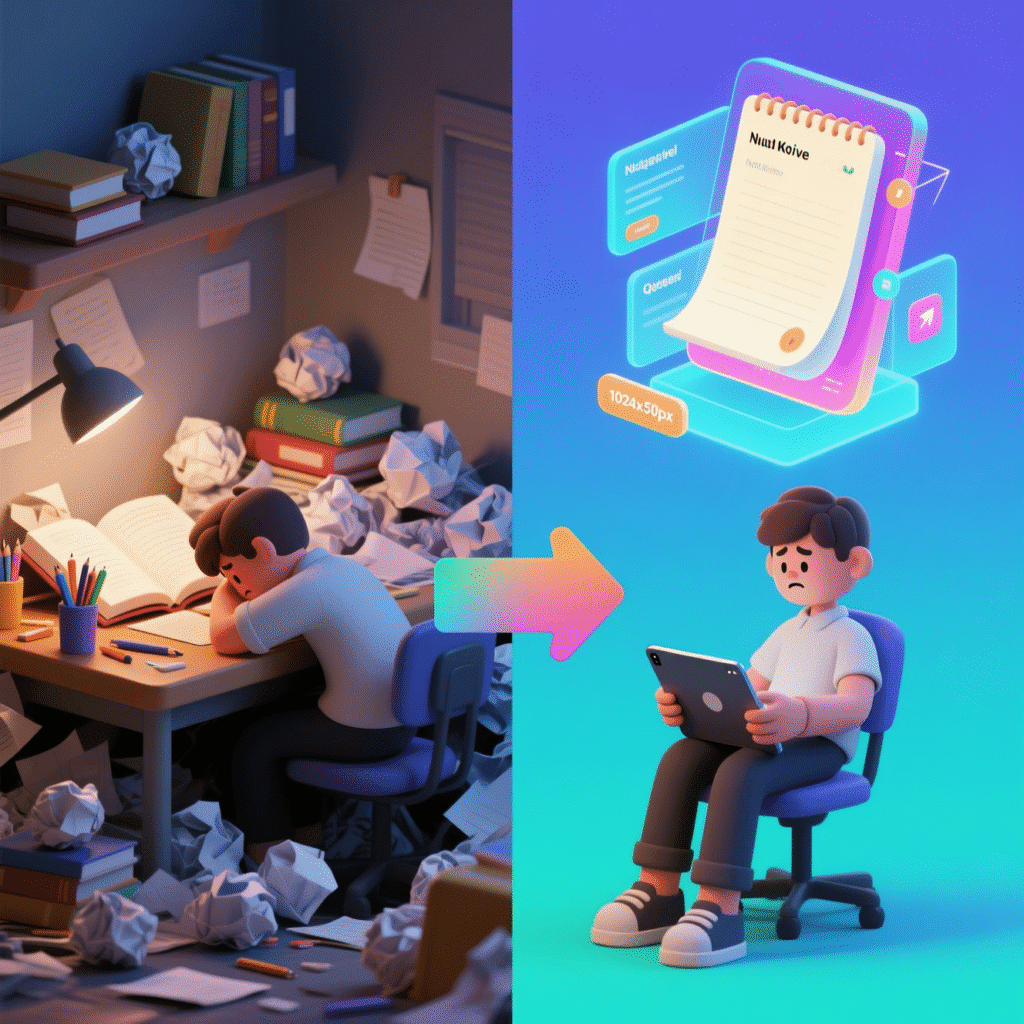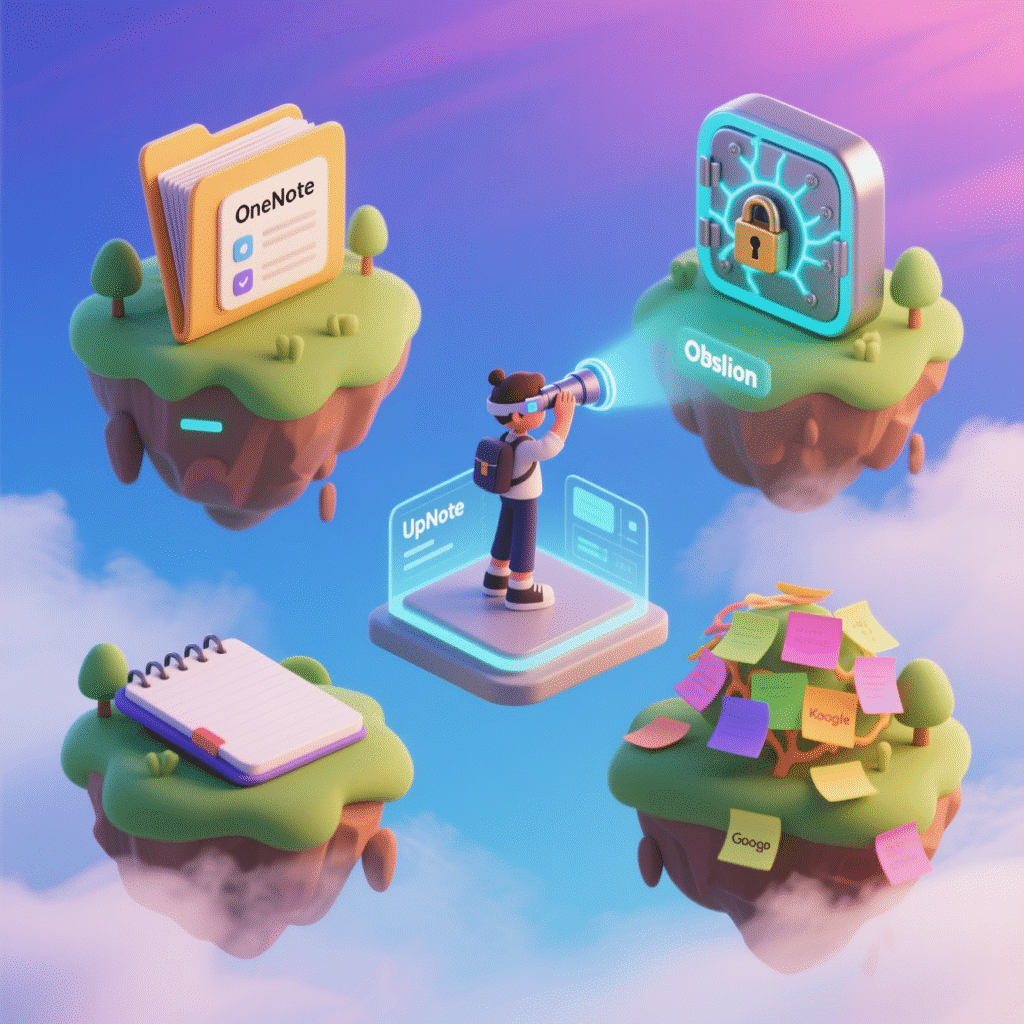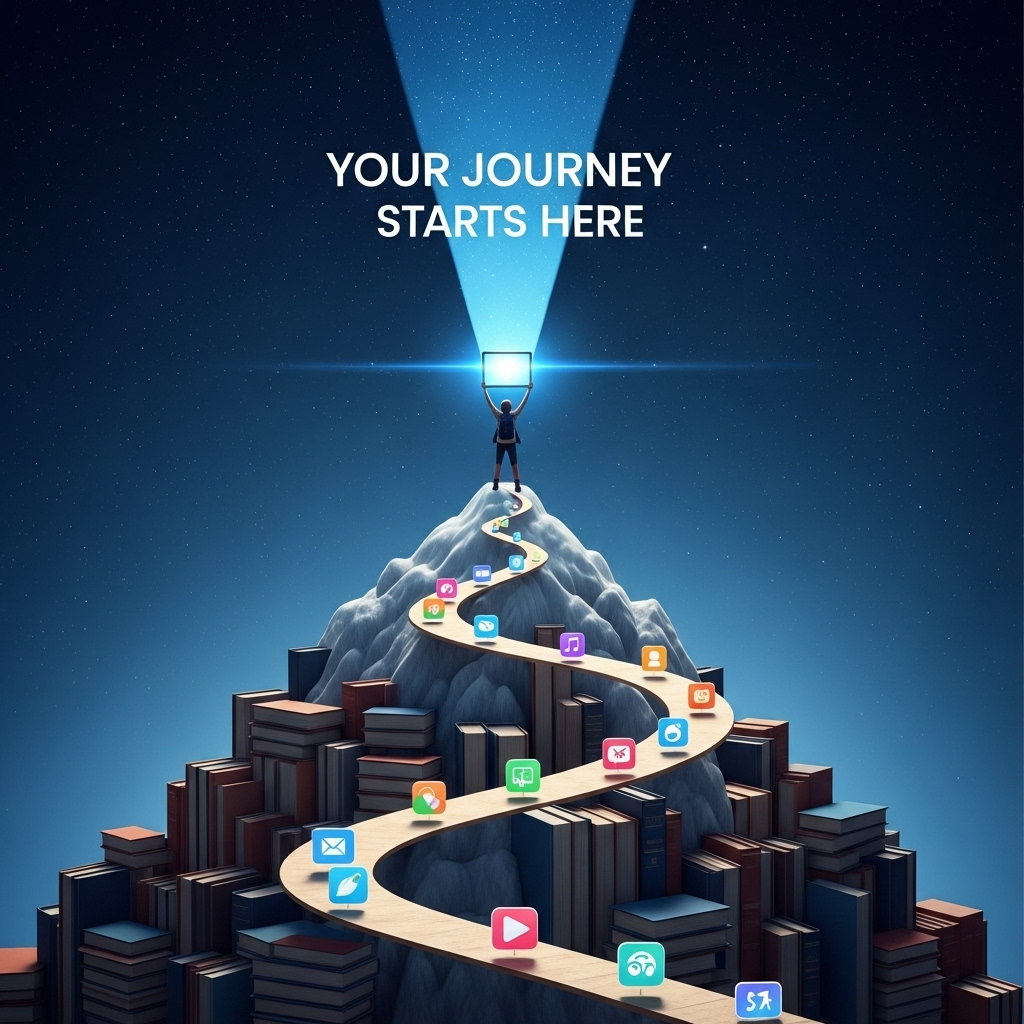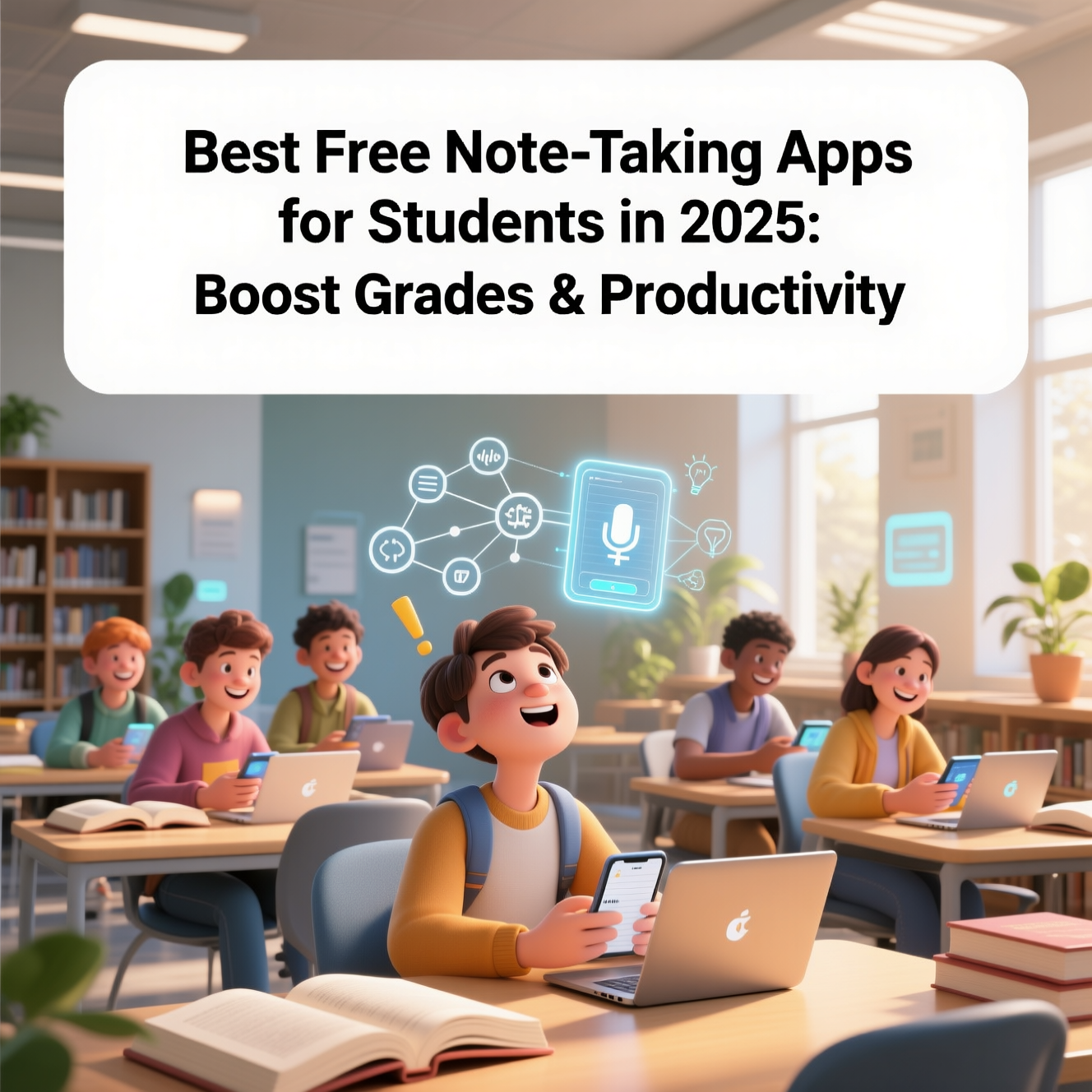You know the struggle. Your professor’s lecturing at light speed, your handwritten notes are a chaotic mess, and you can’t decipher them when it’s time to study for the final. What if you could transform that chaos into an organized, searchable, and downright powerful knowledge base? The right digital tool can make all the difference.
In 2025, the landscape of apps for students is richer and more powerful than ever. But with so many options, how do you choose? You need more than a list; you need a strategy. This guide cuts through the noise. We’ve tested, researched, and compared the best free note-taking apps for students to help you find your perfect match, whether you’re a meticulous planner, a visual thinker, or a minimalist at heart.

Why Your Note-Taking App is Your Secret Academic Weapon
Before we dive in, let’s acknowledge a truth: not all apps for students are created equal. Your note-taking app is more than a digital notepad; it’s your second brain. It’s where lectures, research, and flashes of inspiration converge. A well-chosen app can help you:
- Retain more information by structuring knowledge logically.
- Save precious time with quick search and organization.
- Reduce stress by keeping all your materials in one, secure place.
- Ace group projects with seamless collaboration features.
The key is to match the app to your unique learning style. Let’s find yours.
The Top Contenders: A Detailed Breakdown
Based on extensive research and user experiences 3514, here are the top free apps for students that are dominating the scene in 2025.
1. Microsoft OneNote: The Digital Binder for the Meticulous Organizer
Best For: Students who love structure and free-form note-taking, especially those already in the Microsoft ecosystem.
Imagine a limitless digital binder with an infinite number of tabs, pages, and sections. That’s OneNote. Its notebook-section-page hierarchy is perfect for organizing by semester, class, and topic. You can click anywhere on the page to type, draw, paste images, or embed audio recordings, making it ideal for visual learners and those who hate being constrained by lines 510.
Key Features:
- Freeform Canvas: Type, draw, or paste content anywhere.
- Excellent Organization: Structure notes into notebooks, sections, and pages.
- Top-Tier Web Clipper: Save articles and web content directly to your notebooks with ease 314.
- Deep Office Integration: Seamlessly works with Word, Excel, and PowerPoint.
- Free Tier: Robust and fully functional, using your free OneDrive storage (5GB) 5.
Personal Insight: OneNote is a beast for lecture-heavy classes. I used it to record audio and sync it with my typed notes. During review, I could click on a sentence and hear exactly what the professor was saying at that moment. Game-changer.
2. Joplin: The Powerhouse for Privacy Advocates
Best For: Students who value data privacy and open-source software, and want complete control over their notes.
In an era of data concerns, Joplin stands out. This open-source app gives you complete ownership of your data. You can choose to store your notes locally on your device or sync them across your devices using your own cloud service (like Dropbox or Nextcloud), meaning your notes are truly yours 3.
Key Features:
- End-to-End Encryption: Your data is secure and private.
- Markdown Support: Clean, distraction-free note formatting.
- Full Control: No forced sync to a proprietary cloud.
- Cross-Platform: Works on Windows, Mac, Linux, iOS, and Android.
- Web Clipper: A capable extension for saving online content 3.
The Catch: Its interface is more functional than beautiful, and advanced features like collaboration require a paid sync service 3.
3. Obsidian: The Connected Knowledge Vault for Power Users
Best For: Students studying complex, interconnected subjects (like law, medicine, or history) who love to tinker and build a personal wiki.
Obsidian is less of a note-taking app and more of a knowledge management system. Its superpower is bi-directional linking. As you take notes, you can link concepts together. This creates a web of knowledge, allowing you to see how ideas from your psychology class connect to concepts in your philosophy course. It’s brilliant for building a deep understanding 37.
Key Features:
- Local First: All notes are stored as text files on your computer.
- Graph View: Visualize the connections between your notes.
- Highly Customizable: A massive community plugin library lets you tailor it to your exact needs.
- Future-Proof: Since notes are simple text files, you’ll never be locked into the app.
The Catch: There’s a significant learning curve. It’s for students who are motivated to build their perfect system 3.
4. UpNote: The Unexpected All-Rounder
Best For: The student who wants a beautiful, feature-rich experience without a subscription fee.
UpNote is the dark horse of note-taking—incredibly polished and affordable. It strikes a near-perfect balance between simplicity and power. With a clean interface, rich formatting options, and reliable sync, it feels like a premium app without the premium price tag. Its one-time purchase for premium is a breath of fresh air in a subscription-heavy world 3.
Key Features:
- Elegant Design: A clean, intuitive interface that’s a joy to use.
- Powerful Organization: Notebooks, tags, and pinning keep everything tidy.
- Rich Text Formatting: More styling options than most competitors.
- Cross-Platform Sync: Works flawlessly across devices.
The Catch: The free plan is limited to 50 notes, but the one-time fee for unlimited notes is often worth it for serious students 3.
5. Google Keep: The Digital Sticky Note for Quick Captures
Best For: Capturing ideas, reminders, and quick notes instantly; best used as a supplement to a more robust app.
Don’t underestimate the power of simplicity. Google Keep is the king of quick capture. See a source in the library? Snap a picture, and Keep’s OCR can pull text from it. Have a sudden idea? Dictate a voice note. Need a shared grocery list with your roommate? Keep does it all with effortless speed and integration into the Google ecosystem 14.
Key Features:
- Blazing Fast: Open and create a note in seconds.
- OCR: Extract text from images.
- Voice Notes: Record and transcribe audio memos.
- Deep Google Integration: Notes easily can be exported to Google Docs.
- Colorful & Collaborative: Great for shared, simple lists and ideas.
The Verdict: It’s not for writing your thesis, but it’s the perfect companion app for catching all those little bits of information that would otherwise get lost 14.

Comparison Table: Find Your Fit at a Glance
| App | Best For | Standout Feature | Free Plan Limit | Platform |
|---|---|---|---|---|
| Microsoft OneNote | Structured, multi-format notes | Freeform canvas & web clipper | 5GB of OneDrive storage | Win, Mac, iOS, Android, Web |
| Joplin | Privacy & control | Open-source & end-to-end encryption | Self-imposed (uses your cloud) | Win, Mac, Linux, iOS, Android |
| Obsidian | Connecting complex ideas | Bi-directional linking & graph view | None (pay for sync) | Win, Mac, Linux |
| UpNote | Balance of beauty & function | Rich formatting & one-time fee | 50 notes | Win, Mac, iOS, Android |
| Google Keep | Quick capture & light collaboration | Speed & Google integration | None | iOS, Android, Web |

Beyond the App: Pro-Tips for Digital Note-Taking Success
Choosing the app is only half the battle. Here’s how to make the most of it:
- Embrace Organization from Day One: Create a logical structure (e.g., Notebook > Class > Week) immediately. Future-you will be grateful.
- Tag Everything: Use tags liberally (#exam1, #important, #group_project). This creates a second, powerful way to find information outside of your folder structure.
- Sync is Non-Negotiable: Ensure your app syncs reliably across your phone, laptop, and tablet. Your notes need to be everywhere you are.
- Integrate with Your Calendar: Use your note-taking app in tandem with Google Calendar or another scheduler to link notes directly to deadlines and class times 213.
- Develop a Habit: The best app is the one you use consistently. Make note-taking a ritual during and after every class.
The Verdict: Which App is Right for You?
- Choose OneNote if you want a free, powerful, and versatile digital binder from a trusted name.
- Choose Joplin if you are tech-savvy and prioritize privacy and data ownership above all else.
- Choose Obsidian if you are a power user who wants to build a deep, interconnected web of knowledge.
- Choose UpNote if you want a beautiful, affordable, and all-around excellent writing experience.
- Choose Google Keep if you need a lightning-fast tool for capture, to be used alongside another app.
The best apps for students are the ones that fit seamlessly into your workflow and amplify your learning. Don’t be afraid to try a few. Many offer robust free plans that let you take them for a serious test drive before you commit.

What’s your note-taking style? Have a favorite app that got you through a tough semester? Share your experiences and questions in the comments below—let’s build a community of organized, successful students together!
And if you’re looking to level up your entire productivity system, check out our guide on the best time management apps for students.



